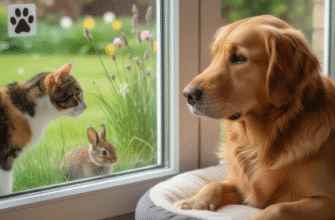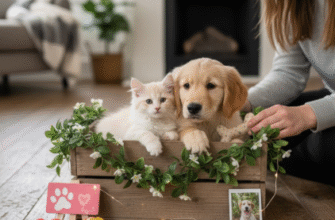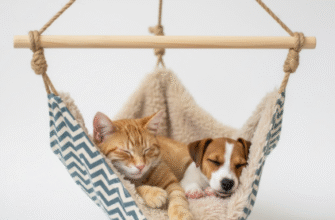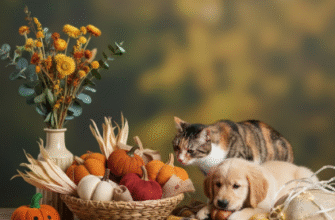Bringing a cat into your life is a wonderful decision, promising companionship, purrs, and the unique charm only felines possess. But just like people, cats have distinct personalities. They aren’t one-size-fits-all companions. Understanding the spectrum of feline energy levels, particularly the difference between highly active cats and those content with a quiet life on your lap, is crucial. Choosing a cat whose temperament aligns with your lifestyle, home environment, and expectations sets the stage for a harmonious relationship for years to come.
Ignoring this fundamental aspect can lead to frustration for both you and your new furry friend. Imagine a tiny, high-octane panther ricocheting off the walls in a small, quiet apartment, or a gentle soul overwhelmed by a boisterous household. Finding the right fit isn’t just preferable; it’s essential for mutual happiness. So, let’s delve into the worlds of the energetic explorer and the serene cuddler.
The Whirlwind: Understanding the Active Cat
Some cats seem to run on pure, unadulterated zoom. These are the active cats, the feline athletes, the curious investigators who view your home as their personal adventure park. Their energy levels are high, and their need for stimulation is significant. Think climbing, chasing, pouncing, exploring every nook and cranny – often at top speed.
What does an active cat look like in action? You might find them scaling bookshelves like furry mountaineers, batting stray dust bunnies under the sofa with intense focus, or engaging in sudden bursts of frantic running (often called the ‘zoomies’). They are typically very playful, often initiating games themselves by bringing you a toy or batting at your feet. Curiosity is their middle name; closed doors are a personal affront, and new objects must be thoroughly inspected, sniffed, and possibly knocked over.
Certain breeds are often associated with higher energy levels, such as the sleek Siamese, the adventurous Abyssinian, or the dynamic Bengal. However, it’s vital to remember that breed is only a potential indicator, not a guarantee. You can find incredibly active domestic shorthairs and surprisingly mellow Bengals. Personality is always king.
Meeting Their Needs: Fueling the Fun
An active cat requires more than just food and water; they need outlets for their boundless energy and keen intelligence. Without sufficient stimulation, they can become bored, stressed, and potentially destructive. Scratching furniture, excessive vocalization, or even developing anxiety can stem from unmet needs.
Essential provisions for an active cat include:
- Vertical Space: Cat trees, shelves, and window perches are non-negotiable. They provide safe outlets for climbing and surveying their territory.
- Interactive Playtime: Daily sessions involving wand toys, laser pointers (used responsibly, always ending on a physical toy), and chase games are crucial. Aim for at least two dedicated play sessions per day.
- Puzzle Toys and Feeders: These engage their minds, making them work for treats or meals, mimicking natural hunting behaviours.
- Variety of Toys: Rotate toys regularly to keep things interesting. Crinkle balls, feather wands, toy mice, and track balls can all provide entertainment.
- Scratching Posts: Offer various types (vertical, horizontal, cardboard, sisal) to satisfy their scratching instincts and save your furniture.
- Safe Exploration: Cat-proofing your home is important. Secure loose wires, remove toxic plants, and ensure high places they might jump from are stable.
Living with an active cat is rewarding for those who appreciate their playful spirit and intelligence. They are often engaging, entertaining, and form strong bonds through interactive play. If you lead an active lifestyle yourself, enjoy interactive pet sessions, and have the space and time to dedicate to their needs, an energetic feline might be your perfect match.
The Cuddle Muffin: Embracing the Lap Cat
On the other end of the spectrum lies the lap cat – the serene, affectionate feline whose primary goal often seems to be achieving maximum comfort, preferably snuggled up with their favourite human. These cats exude a calmer energy, valuing companionship and quiet moments over high-speed chases.
What defines a lap cat? They are often masters of relaxation, found snoozing in sunbeams, curled up in soft blankets, or patiently waiting for an available lap. They actively seek out affection, head-butting your hand for pets, purring readily, and kneading contentment into your leg. While they might enjoy a gentle play session now and then, their endurance is lower, and their preference leans towards closeness and warmth.
Breeds sometimes linked with calmer, more affectionate personalities include the plush Ragdoll, the dignified Persian, or the easy-going British Shorthair. But again, personality trumps breed. Many mixed-breed cats are champion snugglers, embodying the lap cat ideal perfectly.
Catering to the Calm Companion
While less demanding in terms of physical activity, lap cats have their own set of needs centered around comfort, security, and affection. Neglecting their need for companionship can lead to loneliness or anxiety, even in a low-energy cat.
Key considerations for a lap cat include:
- Comfortable Resting Spots: Provide plenty of soft beds, blankets, or even a dedicated cushion on the sofa. They appreciate warmth and security.
- Consistent Affection: Lap cats thrive on interaction. Regular petting sessions, gentle grooming, and simply being present are important for their well-being.
- Gentle Play: They might enjoy batting at a soft toy or slowly stalking a feather wand, but keep play sessions shorter and less intense.
- Grooming: Especially for long-haired breeds often found in this category, regular brushing is essential to prevent mats and tangles, and it doubles as bonding time.
- Quiet Environment: While adaptable, they generally prefer calmer households without excessive noise or sudden disturbances.
- Weight Management: Because they are less active, lap cats can be prone to weight gain. Monitor their food intake and encourage gentle movement to maintain a healthy weight.
When visiting a shelter or rescue, spend quality time observing potential adoptees in a quiet interaction room. Note which cats approach readily for affection versus those more interested in exploring or playing. Shelter staff often have invaluable insights into individual personalities based on daily observation.
A lap cat is an ideal companion for those seeking a calm, affectionate presence in their home. If you enjoy quiet evenings, appreciate a warm weight on your lap while you read or watch TV, and prefer gentle interaction over energetic play, a cuddle-focused feline could be the purr-fect addition to your life.
Finding the Balance: The Best of Both Worlds
It’s important to recognize that many cats don’t fit neatly into these two boxes. Plenty of felines enjoy a good romp and chase session followed by an extended cuddle puddle. They might have bursts of energy interspersed with long naps. These adaptable cats often fit well into a variety of households, appreciating both playtime engagement and quiet companionship.
The key is always observation and understanding the individual cat’s personality rather than relying solely on breed stereotypes or preconceived notions. Energy levels can also change with age; playful kittens often mellow into more relaxed adults, though some retain their kittenish energy throughout their lives.
Which Feline Fits Your Flow? Assessing Your Lifestyle
Before you fall in love with the first pair of feline eyes you meet, take an honest look at your own life and expectations. Mismatched energy levels are a common reason for stress in pet ownership.
Consider these factors:
- Your Time: How much time can you realistically dedicate daily to interactive play? Active cats need significant engagement. Lap cats need consistent affection and presence.
- Your Home: Is your living space large enough for zoomies and climbing structures? Or is it a smaller, quieter environment better suited to a less rambunctious pet?
- Your Household: Is it generally calm or bustling with activity? Do you have young children or other pets? An active cat might overwhelm a timid pet, while a very calm cat might be stressed by constant commotion.
- Your Activity Level: Are you looking for a pet to join in adventures (within reason, for a cat!) or a companion for quiet relaxation?
- Your Expectations: Do you envision a cat constantly seeking interaction and play, or one who is a comforting, quiet presence? Be honest about what you truly want in a feline companion.
Meeting Your Match: Shelters and Beyond
Animal shelters and rescue organizations are fantastic places to find your new best friend. The major advantage here is that the cats are often adults or older kittens with more established personalities. Staff and volunteers spend time with the animals and can usually offer valuable insights into whether a cat leans towards being highly active, a dedicated lap-warmer, or somewhere in between. Spend time with potential adoptees, play with them, see how they respond to petting and being held (if they allow it). Their behaviour in the shelter environment can give you strong clues about their core temperament.
If considering a specific breed known for certain traits, always work with reputable breeders who prioritize temperament and socialization, and insist on meeting the kitten or cat (and ideally its parents) to gauge individual personality.
Individuality is Everything
Ultimately, whether you bring home a furry tornado or a purring pillow, remember that every cat is an individual. While understanding the general tendencies of active versus lap cats provides a helpful framework, be prepared to learn your specific cat’s unique quirks, preferences, and communication style. Building a relationship takes time, patience, and a willingness to meet their needs, whatever their energy level. Choosing wisely based on your lifestyle dramatically increases the chances of creating a loving, lasting bond where both you and your feline companion can thrive.








